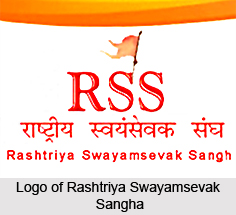 Rashtriya Swayamsevak Sangh is also known as National Volunteers Organization in English. It is also called the RSS or the Sangh and is the largest volunteer organization in the world, situated in India. This organization was established by Dr. K. B. Hedgewar, a doctor by profession from Nagpur. This was founded as a cultural organization before the Indian independence with a vision of forming social services for the improvement of India.
Rashtriya Swayamsevak Sangh is also known as National Volunteers Organization in English. It is also called the RSS or the Sangh and is the largest volunteer organization in the world, situated in India. This organization was established by Dr. K. B. Hedgewar, a doctor by profession from Nagpur. This was founded as a cultural organization before the Indian independence with a vision of forming social services for the improvement of India.
The Rashtriya Swayamsevak Sangh or RSS volunteers took part in several social and political movements which also includes the freedom movement, the Sarvoday, the Bhoodan and the movement for restoring democracy in India. The members of this organisation are also famous for their valuable contribution in the rehabilitation and relief work at the time of natural calamities and for operating one lakh or more service programs in tribal emancipation, health care, education, rural development, self sufficient villages and rehabilitation of special needy children and lepers, etc.
History of RSS
Dr. Keshav Baliram Hedgewar, who was a doctor by profession in , in the year 1925, influenced by the riots of the Hindus and Muslims in his town, founded the Rashtriya Swayamsevak Sangh with the aim of protecting the Hindus by organizing them. Hedgewar anticipated that the Hindus must get united in order to fight against the challenges and safeguard the diversity and freedom of the civilization of India. During the 1940s, the growth and development of the Sangh was ignited by a desire of a handful of Hindus to prepare themselves in response to the increasing mobilization, at times in paramilitary form, against the separatist movements of the Muslims. This type of response was the strongest in places having a Hindu minority. The RSS profited from backing of local community leaders. 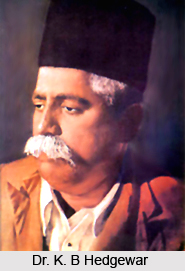 The `full-time workers` or `pracharaks`, who were dispatched on the approval of such patrons, acquired support and organized their efforts from their headquarters located in Nagpur. During the Indian independence movement, the Rashtriya Swayamsevak Sangh campaigned beside the Indian National Congress for the nation`s independence at first while keeping its organization separate and core mission completely different. Thus, when some leaders of the Congress tried to subsume the Sangh into the Congress party and recommended the leaders of RSS to dismantle the organization, they gradually deviated away from Congress.
The `full-time workers` or `pracharaks`, who were dispatched on the approval of such patrons, acquired support and organized their efforts from their headquarters located in Nagpur. During the Indian independence movement, the Rashtriya Swayamsevak Sangh campaigned beside the Indian National Congress for the nation`s independence at first while keeping its organization separate and core mission completely different. Thus, when some leaders of the Congress tried to subsume the Sangh into the Congress party and recommended the leaders of RSS to dismantle the organization, they gradually deviated away from Congress.
Sangh Ideology
The main aim of the Rashtriya Swayamsevak Sangh is the revival of Hinduism and to become an advocacy group for the Hindus, whom they consider are being gradually marginalized because of the alleged `negationism` in India and the acts of pacification against them from the political parties and politicians of the left-wing in favour of radical elements of other religious designations. The core ideology of RSS is founded on Integral humanism and Hindutva, a kind of Hindu Nationalism. The Sangh describes themselves as an `antidote to self-oblivion`, and their aim as an effort to infuse Indians with `a glowing devotion to the Motherland which is India, acute awareness of a general national life resulting from a common culture and mutual history and heritage and a feeling of brotherhood among all citizens`, and also to `to make active the dormant Hindu society in India, understand its past mistakes, to instil in it a solid determination to set them right, and finally to rouse itself to reassert its self-respect` and honour.
RSS during Partition of India
The Partition of India was recorded as one of the most traumatic events in the history of the young nation when millions of Hindus, Sikhs and Muslims, tried their best to get away from the carnage and the violence that followed. The RSS or Sangh gained substantial support and strength due to its relief activities coordinated for the migrating Hindus, and to protect the Sikhs and Hindus in the Hindu-Muslim riots.
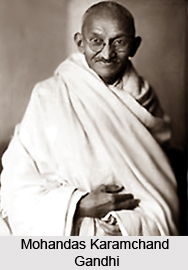 Famous Gandhian and receiver of India`s highest civilian award, the Bharat Ratna, Dr. Bhagwan Das commended the part of the `high-spirited and self-sacrificing boys` of the Sangh in safeguarding the freshly formed Indian Republic, from a designed coup to tumble the administration of Jawaharlal Nehru in Delhi.
Famous Gandhian and receiver of India`s highest civilian award, the Bharat Ratna, Dr. Bhagwan Das commended the part of the `high-spirited and self-sacrificing boys` of the Sangh in safeguarding the freshly formed Indian Republic, from a designed coup to tumble the administration of Jawaharlal Nehru in Delhi.
RSS after Indian Independence
Following the assassination of Mahatma Gandhi in the year 1948, by a former RSS member, Nathuram Godse, a majority of the prominent leaders of the Sangh were arrested and the organisation was banned on the 4th of February, 1948. The connection of Nathuram Godse with RSS was investigated and for this the Justice Kapur Commission was set up to find out the conspiracy to murder Mohandas Karamchand Gandhi. The leaders of RSS were found not guilty of the conspiracy charge by the Supreme Court of India and by an intervention by the Court, the Government of India decided to lift the ban with a term that the Sangh should adopt a formal constitution. The second Sarsanghachalak, Golwalkar blueprinted the RSS constitution which he forwarded to the government in the month of March, 1949 and in the same year, in the month of July, after several negotiations over the constitution and its adoption, the ban was lifted from RSS.
Dadra and Nagar Haveli and Goa Liberation
In post-independent India, various organisations, like the RSS aspired to release Dadra and Nagar Haveli from the clutches of the Portuguese. In the earlier parts of 1954, volunteers Nana Kajrekar and Raja Wakankar of the RSS or Sangh paid several visits to the area round about Dadra and Nagar Haveli and Daman in order to sketch the topography and also to get familiar with the local workers who were campaigning for the liberation. In the month of April 1954, the RSS made a coalition with the Azad Gomantak Dal or AGD and the National Movement Liberation Organization or NMLO for the liberation of Dadra and Nagar Haveli. At night, on the 21st of July, a group called the united front of Goans, working autonomously of the coalition, seized the Police station of the Portuguese at Dadra and announced Dadra as free.
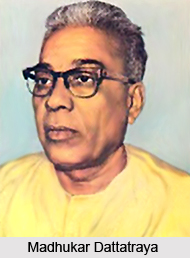 Afterwards on the 28th of July, the volunteer teams of the AGD and the RSS seized control of the territories of Phiparia and Naroli and finally the capital of Silvassa. The forces of the Portuguese who escaped and fled in the direction of Nagar Haveli, were attacked at Khandvel and were pressured to draw back till they gave up to the Indian border police at Udava on the 11th of August 1954. On the 11th of August 1954 a native administration was founded as Appasaheb Karmalkar of NMLO the administrator of Dadra and Nagar Haveli. The release of Dadra and Nagar Haveli from the Portuguese provided an upliftment to the freedom movement in Goa against the rule of the Portuguese. In the year 1955, the leaders of RSS asked for an end of the rule of Portuguese in Goa and the integration of Goa into India. With the refusal of the then Prime Minister of India, Jawaharlal Nehru, to get Goa from the Portuguese by armed intervention, Jagannath Rao Joshi, the RSS leader, led the Satyagraha unrest straight into Goa. The leader was imprisoned along with his followers by the Portuguese police. However, the peaceful protests was carried on which met with grievous repressions in August 15, 1955 when the Portuguese police fired on the Satyagrahis and killing thirty or more people.
Afterwards on the 28th of July, the volunteer teams of the AGD and the RSS seized control of the territories of Phiparia and Naroli and finally the capital of Silvassa. The forces of the Portuguese who escaped and fled in the direction of Nagar Haveli, were attacked at Khandvel and were pressured to draw back till they gave up to the Indian border police at Udava on the 11th of August 1954. On the 11th of August 1954 a native administration was founded as Appasaheb Karmalkar of NMLO the administrator of Dadra and Nagar Haveli. The release of Dadra and Nagar Haveli from the Portuguese provided an upliftment to the freedom movement in Goa against the rule of the Portuguese. In the year 1955, the leaders of RSS asked for an end of the rule of Portuguese in Goa and the integration of Goa into India. With the refusal of the then Prime Minister of India, Jawaharlal Nehru, to get Goa from the Portuguese by armed intervention, Jagannath Rao Joshi, the RSS leader, led the Satyagraha unrest straight into Goa. The leader was imprisoned along with his followers by the Portuguese police. However, the peaceful protests was carried on which met with grievous repressions in August 15, 1955 when the Portuguese police fired on the Satyagrahis and killing thirty or more people.
Different Members of RSS
The RSS possesses more than 4.5 million members. It organizes itself in the hierarchical order.
Sarsanghchalaks
The Sarsanghchalak is regarded as the family head of the Sangh or RSS organization and the individuals who made themselves the Sarsanghchalkas include Dr. Keshav Baliram Hedgewar (the founder), also called Doctorji, Madhavrao Sadashivrao Golwalkar, famously called Guruji, Madhukar Dattatraya Deoras, also called Balasaheb, Rajendra Singh (Rajjubhaiya), Kuppahalli Sitaramayya Sudarshan and the present Sarsanghchalak is Mohan Rao Bhagwat. The Sarsanghchalak is chosen by nomination which also follows elections held at the annual `Akhil Bharatiya Pratinidhi Sabha` meeting.
Shakha
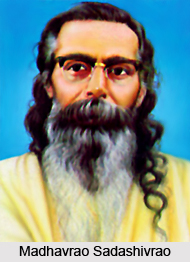 Shakhas means branch in Sanskrit language. Majority of the organizational work of the Sangh is carried through the coordination of branches or shakhas. These shakhas held every morning called prabhat shakha, every evening called sayam shakha or night called atisayam shakha for an hour in public places. The Shakhas are free for all creeds, castes or social and economic status of people to join. These shakhas operated generally in playing grounds without having any offices. When the shakha closes, the prayer `Namaste Sadaa Vatsale Matrubhoome` meaning `my salutation to you, ever loving motherland` is recited. These shakhas form the core building blocks of the structure of the RSS. The activities during a Shakha include games, discussions on broad range of social topics, yoga, prayer to Bharat Mata and a sacred session called baudhik. The uniform of this organization bears white shirt and khakhi, a black cap and coloured shorts. On the auspicious day of `Guru Poornima` the volunteers of RSS pay homage to the `Bhagwa Dhwaj`, the saffron flag, which has significant symbolic importance. A volunteer of the RSS who takes part in the shakha is called a `Swayamsevak`. A Swayamsevak is at times appointed in the post of a Sanghchalak, which means group administrator, and is handed over the job of organizing and leading the events of the Shakha.
Shakhas means branch in Sanskrit language. Majority of the organizational work of the Sangh is carried through the coordination of branches or shakhas. These shakhas held every morning called prabhat shakha, every evening called sayam shakha or night called atisayam shakha for an hour in public places. The Shakhas are free for all creeds, castes or social and economic status of people to join. These shakhas operated generally in playing grounds without having any offices. When the shakha closes, the prayer `Namaste Sadaa Vatsale Matrubhoome` meaning `my salutation to you, ever loving motherland` is recited. These shakhas form the core building blocks of the structure of the RSS. The activities during a Shakha include games, discussions on broad range of social topics, yoga, prayer to Bharat Mata and a sacred session called baudhik. The uniform of this organization bears white shirt and khakhi, a black cap and coloured shorts. On the auspicious day of `Guru Poornima` the volunteers of RSS pay homage to the `Bhagwa Dhwaj`, the saffron flag, which has significant symbolic importance. A volunteer of the RSS who takes part in the shakha is called a `Swayamsevak`. A Swayamsevak is at times appointed in the post of a Sanghchalak, which means group administrator, and is handed over the job of organizing and leading the events of the Shakha.
There are several organisations in India running under the influence of RSS like the Seva Bharti, Vidya Bharti, Akhil Bharatiya Vidyarthi Parishad, Swadeshi Jagran Manch, Hindu Swayamsevak Sangh, Vishwa Hindu Parishad, etc. According to RSS, the philosophy of Hindutva states `Ekam Sat Viprah Bahudha Vadanti Vasudhaiva Kutumbakam`, whose English translation means, truth is one, sages address it by different names and the entire universe is one family.



















